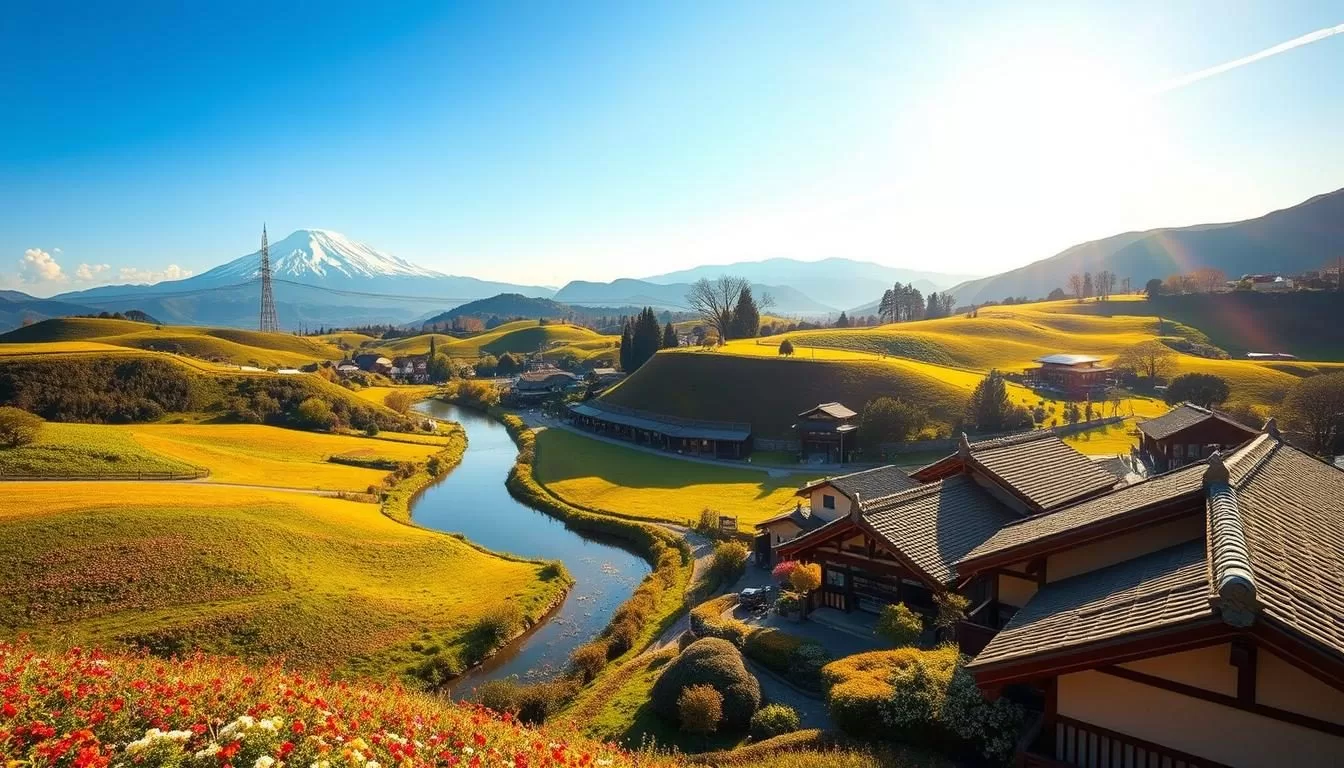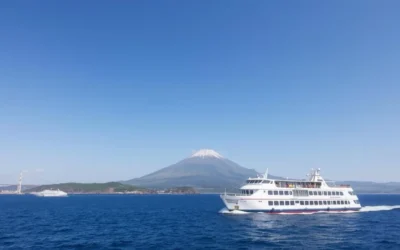✓ Accommodations✓ Flights✓ Rental Cars
Planning a trip to Yamagata Prefecture can be a thrilling experience, especially when you consider the diverse seasonal changes and unique weather patterns that make this northern Tohoku region a hidden gem in Japan.
Timing is everything when visiting this prefecture, as its four distinct seasons offer completely different travel experiences. From the serene snow-covered landscapes of winter to the vibrant cherry blossom springs, weather plays a crucial role in shaping your trip.
Understanding the best months to visit and how the prefecture’s mountainous terrain influences local weather conditions will help you align your travel interests with the ideal time to visit, ensuring an optimal experience.
Discovering Yamagata Prefecture: Japan’s Hidden Gem
Tucked away in northern Japan, Yamagata Prefecture is a treasure trove of natural beauty waiting to be explored. As you venture into this enchanting region, you’ll discover a diverse array of landscapes that showcase the best of Japan’s nature.
Geographic Location and Landscape
Yamagata Prefecture is nestled on the western side of Japan’s northern Tohoku region, bordered by the Sea of Japan and surrounded by magnificent mountain ranges. The prefecture’s diverse landscape features everything from the volcanic peaks of Mt. Zao to fertile valleys, dense forests, and coastal areas, creating microclimates that vary significantly across the region.
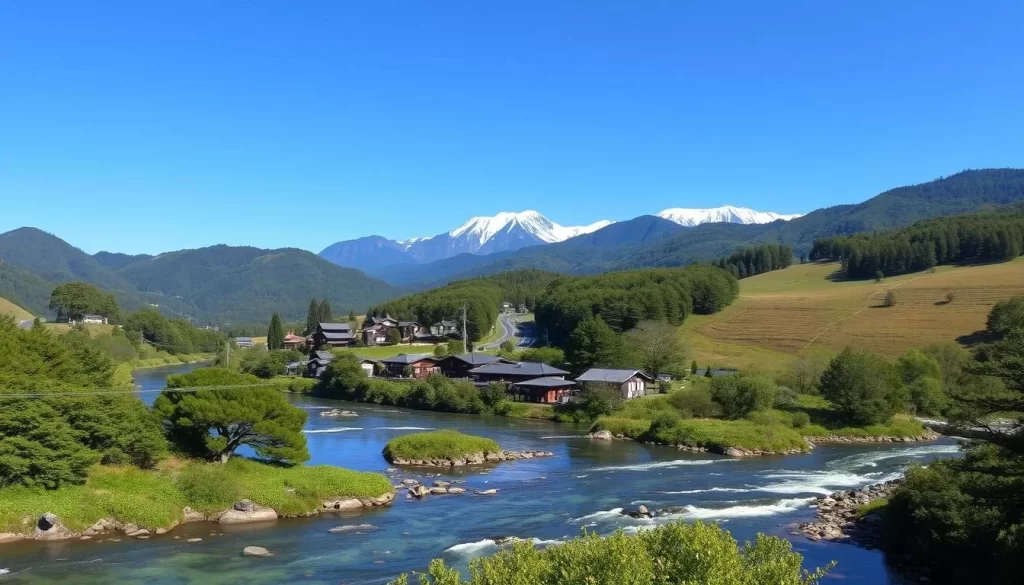
Why Weather Matters in Yamagata
The geographic position of Yamagata Prefecture creates some of Japan’s heaviest snowfall in winter and pleasant, moderate temperatures in other seasons, making weather planning crucial for a visit to this place. The mountainous terrain dramatically influences local conditions, with higher elevations experiencing different weather patterns than the lowland areas, affecting your travel experience depending on your chosen destinations.
Yamagata’s natural features, including its mountains, hot springs, and river valleys, are best experienced during specific months when weather conditions highlight their unique beauty, making it essential to plan your trip to Yamagata Prefecture accordingly.
Yamagata’s Four Distinct Seasons: Weather Overview
As you explore Yamagata, you’ll discover that its climate is characterized by four distinct seasons, each offering a unique experience. This variability is a hallmark of the region, making it a fascinating destination throughout the year.
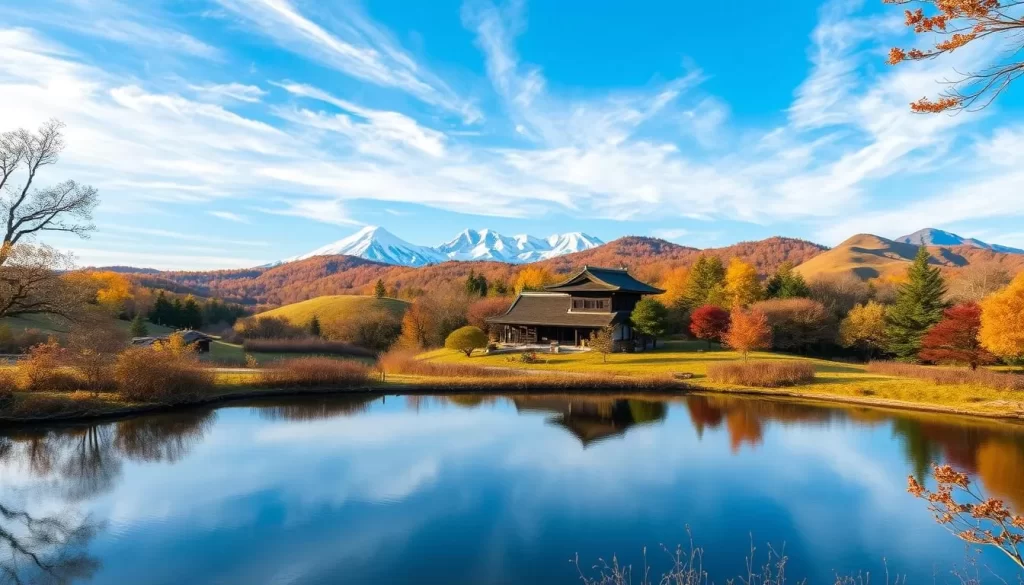
Temperature and Precipitation Patterns
The seasonal changes in Yamagata are pronounced, with significant variations in temperatures and precipitation. Winters are cold, with temperatures ranging from -5°C to 5°C (23°F to 41°F), accompanied by heavy snowfall. In contrast, summers see temperatures between 20°C and 30°C (68°F to 86°F), with increased humidity and rainfall. Spring and autumn offer more moderate weather, with temperatures between 10°C to 25°C (50°F to 77°F) and less precipitation, making these seasons ideal for outdoor activities.
How Yamagata’s Climate Differs from Other Japanese Regions
Unlike southern parts of Japan, such as Tokyo, Yamagata’s climate is more extreme, with colder winters and heavier snowfall. This is due to its northern location and proximity to the Sea of Japan, creating what locals refer to as the “back Japan climate.” Winter winds from Siberia pick up moisture from the Sea of Japan, resulting in heavy snow when they hit the mountains. This unique geography makes Yamagata a great destination for those seeking a distinct weather experience at any time of the year.
Winter in Yamagata: Snow Wonderland (December-February)
From December to February, Yamagata is at its most enchanting, with winter bringing a blanket of snow to the region. This season transforms the landscape into a serene wonderland, perfect for a variety of winter activities.

The Famous Zao Snow Monsters Phenomenon
One of Japan’s most spectacular winter phenomena can be witnessed at Zao Onsen, where snow and ice formations create the famous “juhyo” or snow monsters. These natural wonders transform the landscape into an otherworldly scene from late December through early March.
The unique combination of wind, temperature, and snow creates these icy marvels, making Zao Onsen a must-visit destination during the winter season.
Winter Sports and Activities
Winter in Yamagata brings some of Japan’s heaviest snowfall, with accumulations often exceeding 3-5 meters in mountain areas. This creates perfect conditions for winter activities like skiing and snowboarding.
You can enjoy world-class skiing and snowboarding at resorts like Zao Onsen Ski Resort, where the powder snow quality rivals Hokkaido’s but with fewer international tourists.
Winter Festivals and Celebrations
The winter season in Yamagata offers unique cultural experiences, including the Yamagata Snow Lantern Festival, where hundreds of snow lanterns illuminate the night, creating a magical winter atmosphere.
Experiencing the contrast of freezing outdoor temperatures with the warmth of natural hot springs is a quintessential Yamagata winter activity, with many ryokans offering outdoor baths with snow views.
Spring in Yamagata: Cherry Blossom Season (March-May)
As spring unfolds, Yamagata Prefecture transforms into a breathtaking landscape, making it an ideal time to visit. The cherry blossoms are a major highlight of the season, attracting visitors from all over the world.
Cherry Blossom Viewing Spots
Yamagata boasts several spectacular cherry blossom viewing locations. One of the most popular spots is Kajo Park, built around the former Yamagata Castle, featuring over 1,500 cherry trees. It is ranked among Japan’s top 100 cherry blossom spots, making it a must-visit destination during the spring season.
The cherry blossom season in Yamagata typically occurs from mid-April to early May, slightly later than in Tokyo. This staggered blooming period allows visitors to extend their hanami (cherry blossom viewing) experience if they’re touring Japan.
Spring Weather Conditions and What to Pack
Spring weather in Yamagata is characterized by gradually warming temperatures, ranging from 5°C to 20°C (41°F to 68°F), with occasional rain showers. To be prepared, you should pack layers, including light jackets, sweaters, and rain gear, as temperatures can fluctuate significantly throughout the day.
Beyond the cherry blossoms, spring brings vibrant green landscapes as the mountain snow melts, creating ideal conditions for hiking and exploring outdoor attractions with comfortable temperatures and fewer crowds than summer.
Summer in Yamagata: Festival Season (June-August)
Yamagata Prefecture comes alive during the summer months, offering a unique blend of traditional festivals and outdoor activities. The summer season brings warmth and vibrancy to the region, making it an ideal time to experience the local culture.
Navigating the Rainy Season
Summer in Yamagata begins with the rainy season, known as “tsuyu,” which typically lasts from mid-June to mid-July. During this period, you can expect increased humidity and daily rainfall, although it’s generally less intense than in southern Japan. To make the most of your visit, plan indoor activities or explore the region’s many hot springs, which offer a relaxing respite from the rain.
Summer Festivals and Cultural Events
The summer season is a time for celebration in Yamagata, with numerous festivals taking place throughout the region. One of the highlights is the Yamagata Hanagasa Festival in August, where thousands of dancers fill the streets wearing traditional straw hats and performing to folk music. You can also enjoy other cultural events, such as fireworks displays and traditional dance performances, which showcase the region’s rich heritage.
Mountain Retreats to Beat the Heat
As the summer heat sets in, you can escape to the cooler mountain areas, such as the Zao mountains, which offer a refreshing retreat from the urban heat. Alternatively, visit the Mogami River, where boat cruises provide a cooling breeze and spectacular scenery. Many festivals also take place in these mountainous regions, adding to the festive atmosphere.

Autumn in Yamagata: Foliage and Harvest (September-November)
As the summer heat dissipates, Yamagata Prefecture transforms into a kaleidoscope of autumn colors, making it an ideal time to visit. The autumn season brings a comfortable temperature, ranging from 10°C to 20°C (50°F to 68°F), perfect for outdoor activities like hiking, cycling, and exploring the countryside.
The fall foliage in Yamagata is a major attraction, with the prefecture’s abundant maple, ginkgo, and beech trees turning vibrant shades of red, orange, and yellow. The foliage is typically at its peak from mid-October through November.
Best Spots for Fall Foliage
Yamagata offers numerous breathtaking spots to witness the autumn foliage. Yamadera Temple is one of the most popular destinations, where the historic temple structures frame the vibrant foliage, creating postcard-perfect scenes. The fall color progression typically begins in higher elevations like Mt. Zao in early October before gradually descending to lower areas by early November.
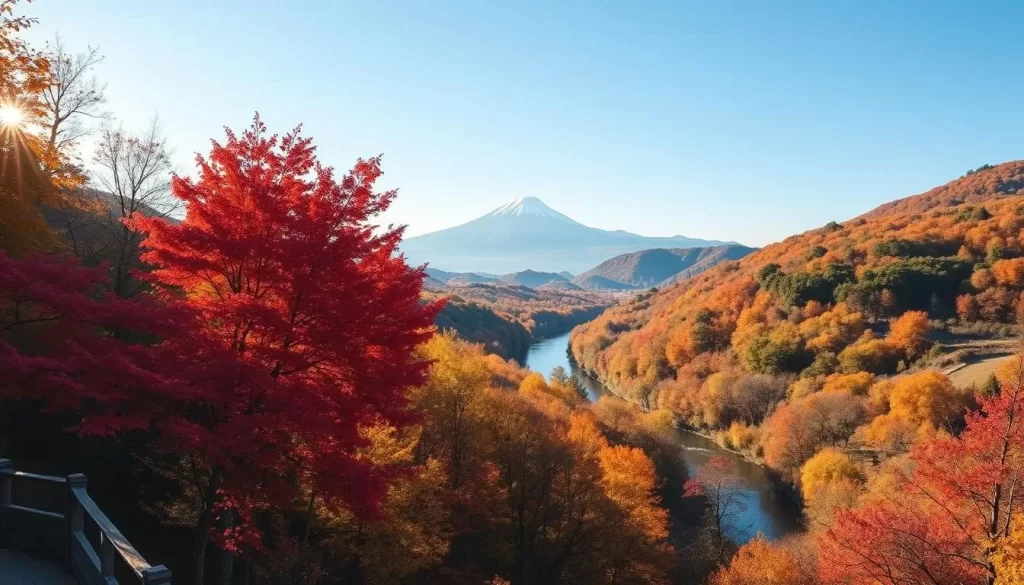
Harvest Season and Food Festivals
Autumn in Yamagata also brings the harvest season, with the prefecture famous for producing some of Japan’s finest fruits, including apples, grapes, and pears. Many orchards offer fruit-picking experiences, and local festivals celebrate the harvest. You can enjoy seasonal foods and drinks, savoring the flavors of the season.
The comfortable autumn weather makes it an ideal time to explore Yamagata’s natural beauty and cultural heritage. Whether you’re interested in outdoor activities or simply enjoying the scenery, Yamagata has something to offer during the fall season.
Yamagata Prefecture, Japan: Best Months for a Weather-Savvy Trip
Yamagata’s diverse climate means that the best time to visit varies based on your travel goals. Understanding the seasonal variations is key to planning a trip that meets your expectations.
Ideal Months for Different Travel Experiences
The ideal months for visiting Yamagata depend on the experiences you’re looking for. For a unique winter experience, late January to February is perfect for witnessing the famous Zao Snow Monsters. If you’re interested in cherry blossoms, mid-April is the time to visit. For those who enjoy summer festivals, August is the month, while peak autumn foliage can be enjoyed in late October.
- Mid-April to early June offers pleasant temperatures and minimal rainfall, making it ideal for outdoor activities.
- Late September to early November provides comfortable weather and spectacular autumn foliage.
- For specific experiences like snow monsters, cherry blossoms, summer festivals, and autumn foliage, timing your visit is crucial.
Avoiding Crowds: Traveling During Shoulder Seasons
To avoid the crowds, consider visiting during the shoulder seasons. Early April, before the cherry blossom crowds arrive, or late May, after the Golden Week holidays end, can be excellent times. The shoulder months of June (after the rainy season) and September (after summer vacation ends) offer good weather with significantly fewer domestic tourists.
Visiting during these off-peak times not only provides a more authentic and relaxed experience but also offers better availability at traditional ryokans, less crowded attractions, and more opportunities to interact with locals.
Essential Experiences in Yamagata Throughout the Year
As you explore Yamagata Prefecture, you’ll uncover a wealth of experiences that showcase its natural beauty and cultural heritage. From relaxing in hot springs to hiking through scenic landscapes, Yamagata offers a diverse range of attractions that cater to all interests.
Ginzan Onsen: A Year-Round Hot Spring Retreat
Ginzan Onsen is a place where time seems to stand still. Nestled in a secluded valley, this hot spring town is famous for its Taisho-era architecture and enchanting atmosphere. The traditional wooden inns, glowing gas lamps, and cobblestone streets transport you to a bygone era.
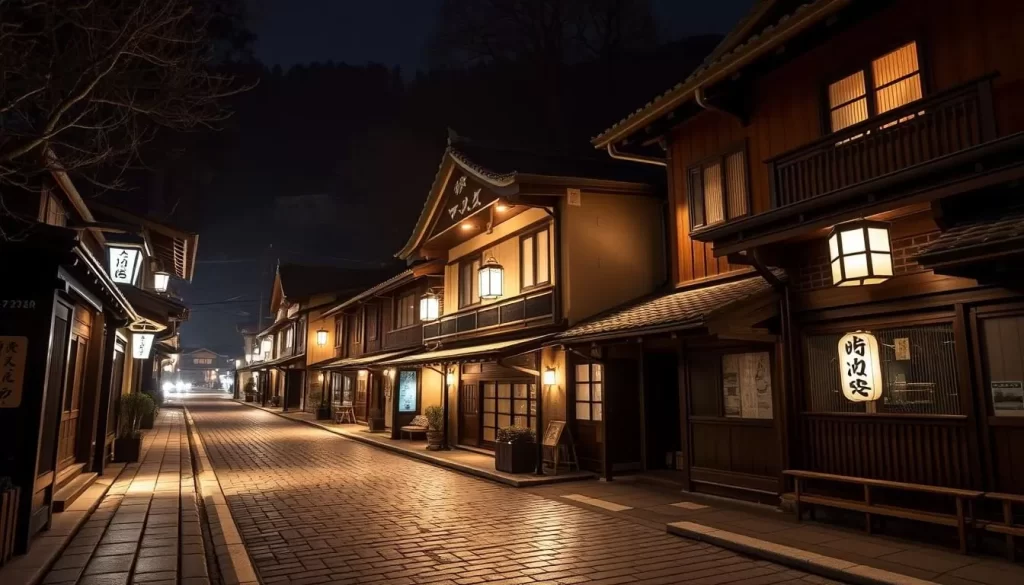
Yamadera Temple: Spiritual Journey in Any Season
Yamadera Temple, founded in 860, is perched on a mountainside, offering breathtaking views. To reach the main hall, you’ll need to climb 1,015 stone steps, a journey that takes about 30 to 40 minutes. This temple provides a different experience each season, from snow-covered tranquility in winter to cherry blossoms in spring, lush greenery in summer, and fiery foliage in autumn.
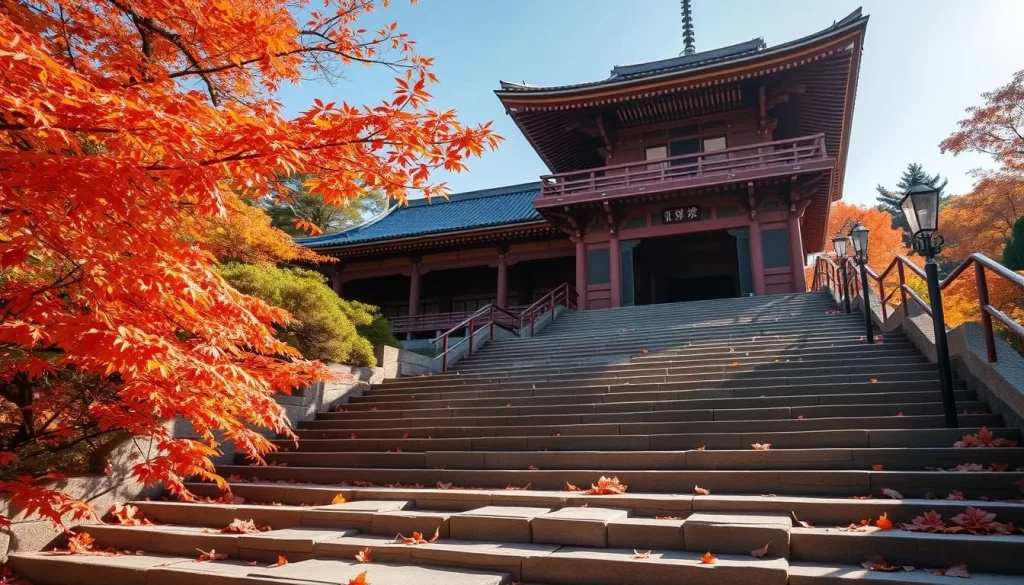
Culinary Delights: Seasonal Specialties
You can sample Yamagata’s renowned cuisine year-round, but certain specialties shine in different seasons. Enjoy Yonezawa beef hotpot in winter, fresh mountain vegetables in spring, cold soba noodles in summer, and new harvest rice and fruits in autumn. The mountain hot springs of Zao Onsen offer therapeutic sulfur-rich waters, believed to help with various ailments, alongside spectacular mountain views that change dramatically with the seasons.
In conclusion, Yamagata Prefecture is a destination that offers a rich tapestry of experiences and attractions throughout the year. Whether you’re soaking in the hot springs of Ginzan Onsen, hiking to Yamadera Temple, or savoring local cuisine, you’ll find that Yamagata’s unique charm and natural beauty make it a truly unforgettable destination.
Practical Travel Tips for Your Yamagata Adventure
To make the most of your Yamagata adventure, consider the following travel tips. The Yamagata Shinkansen is your fastest route from Tokyo, taking just 2 to 2.5 hours to reach key stations, making it a convenient choice for travelers. Once you arrive, public transportation like buses and local trains can take you to popular spots.
For flexibility, renting a car is a great option, especially for exploring rural areas during less crowded times. Be sure to book your accommodations in advance during peak seasons. Packing appropriately for the season is also crucial, with winter requiring serious cold-weather gear and summer needing light, breathable clothing.
Allow extra travel time during winter months due to potential transportation delays, and consider purchasing travel insurance that covers weather-related disruptions.
The above is subject to change.
Check back often to TRAVEL.COM for the latest travel tips and deals.
